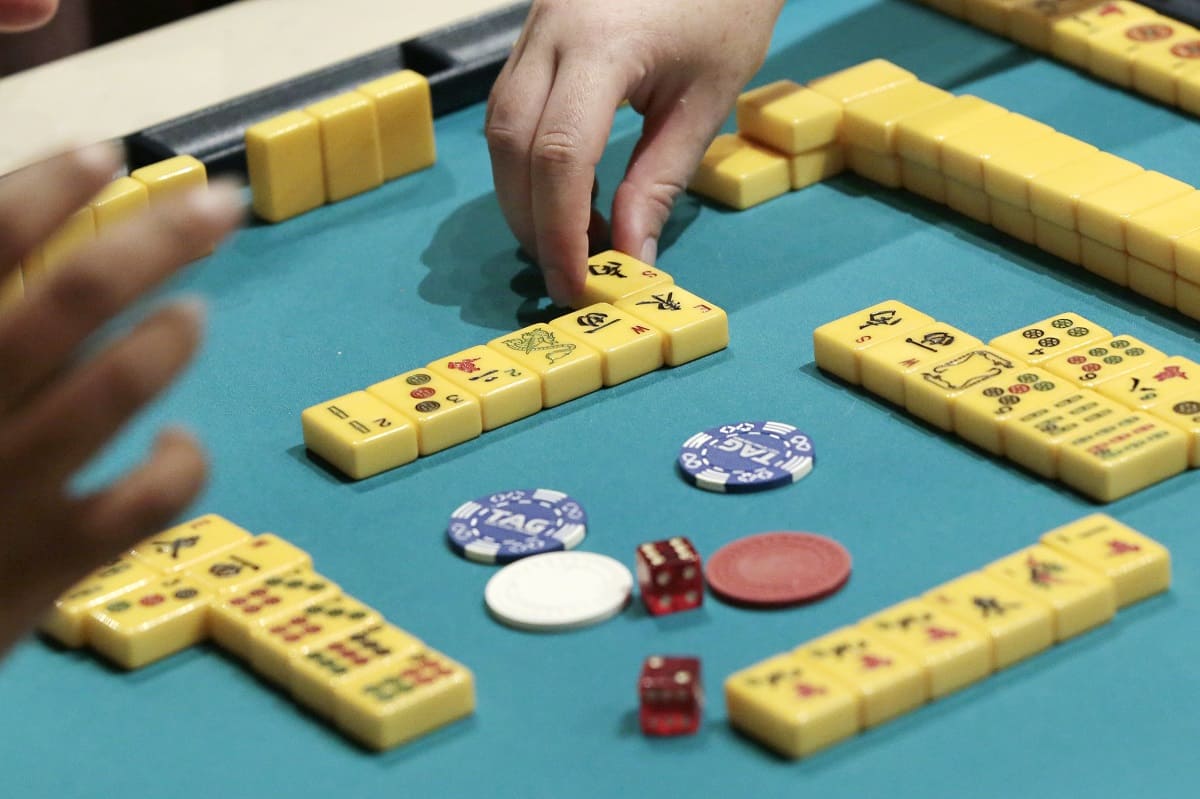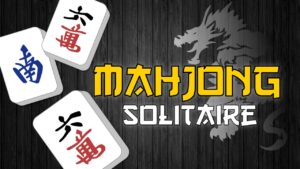
What is a Mahjong Game: A Look into the Game's History
Mahjong is a classic tabletop game that originated in China, and its history is as intricate as the game itself. Let's delve into the annals of time to unearth the origins of Mahjong and understand its evolution.
Mahjong, often referred to as the "game of a hundred intelligences," traces its roots back to 19th-century China. The game was originally known as "Máquè," which translates to "sparrows" in English, a reference to the bird-shaped tiles used in the early sets. Over the years, it transformed into the Mahjong we recognize today.
The Origins of Mahjong: A Journey Through Time
Mahjong's early history is shrouded in mystery, much like the game's intricate strategy. While its exact origins remain a subject of debate among historians, many believe it was the brainchild of a nobleman in the Qing Dynasty. With the passage of time, the game's popularity soared, and it spread like wildfire throughout China.
During the early 20th century, Mahjong made its way to the United States and other parts of the world, introducing a captivating blend of strategy, luck, and social interaction to a global audience. The game quickly became an icon of Chinese culture and an essential component of traditional Chinese New Year celebrations.
Mahjong’s Global Impact
As Mahjong transcended its Chinese origins, it morphed into an international sensation. The game adapted to various cultural contexts, and different regions developed their own rule sets and tile designs. In the 1920s, Joseph Park Babcock, an American, published the first Mahjong rulebook, standardizing the game for Western audiences.
Mahjong's global influence continued to expand throughout the 20th century, making appearances in movies, literature, and popular culture. Today, the game is enjoyed by enthusiasts worldwide, transcending borders and languages.
Components of Mahjong
Before we can dive into the intricate gameplay, let's acquaint ourselves with the components that make up a Mahjong set.
A standard Mahjong set consists of 144 tiles, divided into three main categories: the suit tiles, honor tiles, and bonus tiles. Each of these categories has a unique role in the game.
- The Suit Tiles: These tiles are further divided into the Bamboo, Character, and Dot suits, each numbered from one to nine. They make up the majority of the tiles in a Mahjong set.
- The Honor Tiles: Honor tiles consist of the Wind and Dragon tiles. There are four Wind tiles (North, South, East, and West) and three Dragon tiles (Red, Green, and White). These tiles carry significant value in the game.
- The Bonus Tiles: The bonus tiles are often referred to as Flower and Season tiles. They are used in certain variations of Mahjong to add an extra layer of complexity and strategy.
The Mahjong Tiles: A World of Symbols
Each tile in a Mahjong set is adorned with intricate symbols and characters, adding to the game's mystique. The symbolism on the tiles reflects Chinese culture and history, making it a visual feast for players.
The intricate design of Mahjong tiles is a testament to the artistry and craftsmanship associated with the game. These symbols, some of which date back centuries, add a layer of depth and tradition to the gameplay, making Mahjong more than just a game—it's a cultural experience.
Setting Up the Mahjong Game
Now that we're familiar with the components, let's learn how to set up a Mahjong game. The process can seem intimidating at first, but it becomes second nature with practice.
- Shuffling the Tiles: Begin by thoroughly shuffling all the tiles. This ensures that the tiles are mixed well and no player has an unfair advantage.
- Building the Wall: Create a square wall with the tiles. The arrangement varies depending on the number of players and the specific Mahjong rules you're using.
- Dealing the Tiles: Distribute the tiles to the players, typically 13 tiles each in a standard game. The players then arrange their tiles to form a concealed hand.
- Extra Tiles: After the initial deal, each player receives additional tiles, building their hand to 14 tiles.
- Discard and Draw: The gameplay involves drawing tiles, discarding unwanted ones, and forming combinations called "melds" to win the game.
Basic Rules of Mahjong
Understanding the basic rules of Mahjong is crucial for an enjoyable gaming experience. While there are countless regional variations, the core principles remain constant.
- Objective: The primary objective in Mahjong is to create specific combinations of tiles to form a winning hand. These combinations can vary based on the rule set in play.
- Scoring: Scoring in Mahjong is a complex system, and it varies between different rule sets. Points are awarded for winning hands, and they often depend on factors such as the value of the tiles, the manner of victory, and special circumstances.
- Game Phases: Mahjong games consist of several phases, including the dealing of tiles, drawing and discarding, and declaring victory. Understanding when and how to declare victory is essential.
- Winning Hands: Different rule sets have their own criteria for winning hands. Some common combinations include pairs, sequences, and sets of identical tiles.
Mahjong Variations: A Diverse World of Play
Mahjong's adaptability has led to a plethora of variations, each with its own rules and strategies. Here are a few notable ones:
- Chinese Classical Mahjong: The traditional form of Mahjong, characterized by its complex rules and scoring system.
- Japanese Riichi Mahjong: A fast-paced version with a unique scoring system and complex rules governing player behavior.
- American Mahjong: Popular in the United States, this version includes unique tiles, special rules, and an emphasis on social play.
- Hong Kong Mahjong: Known for its simplicity and emphasis on fast play, this variation is common in the former British colony.
- European Mahjong: A simplified version that often serves as an introduction to the game for new players.
Mahjong Strategy: Unlocking the Game’s Depth
Mahjong is not merely a game of chance; it's a game of skill, strategy, and observation. Developing a winning strategy requires practice and a keen eye. Here are some tips to improve your Mahjong game:
- Tile Efficiency: Focus on maximizing the efficiency of your tile sets. Discard tiles that are unlikely to contribute to your winning hand.
- Observation: Pay close attention to the tiles other players discard. This can provide crucial information about their hands and strategies.
- Positioning: Understand your position in the game and adapt your strategy accordingly. Are you ahead or behind in points? This should influence your choices.
- Risk and Reward: Balancing risk and reward is key. Sometimes it's better to play conservatively, while other times taking a calculated risk can lead to victory.
The Popularity of Mahjong in the Digital Age
In recent years, Mahjong has experienced a resurgence in popularity, thanks in part to the digital age. Online platforms and mobile apps have made it easier than ever to enjoy the game with friends and players from around the world.
Whether you're a seasoned Mahjong pro or a newcomer, the digital era offers a convenient way to hone your skills and connect with other enthusiasts. There's no shortage of Mahjong apps and websites, making it accessible to players of all ages.
Mahjong and Culture: A Profound Connection
Mahjong is deeply intertwined with Chinese culture. It's a game that has been played for generations, passed down through families and embraced in various celebrations and festivals.
The game's rich history, symbolism, and enduring popularity make it a symbol of cultural heritage. The intricate tiles themselves are a testament to the artistry and craftsmanship that has thrived in China for centuries.


